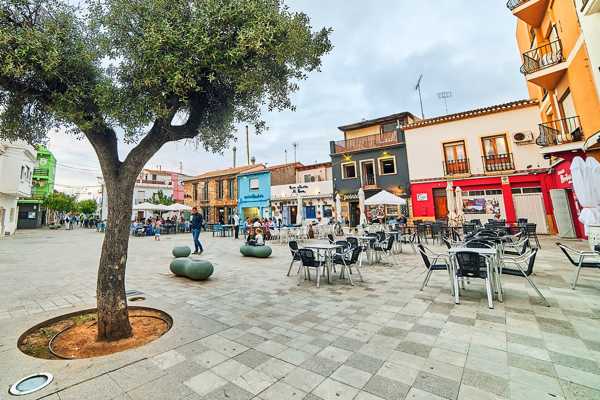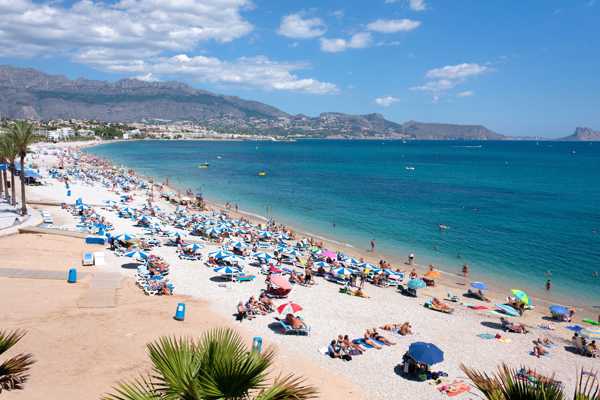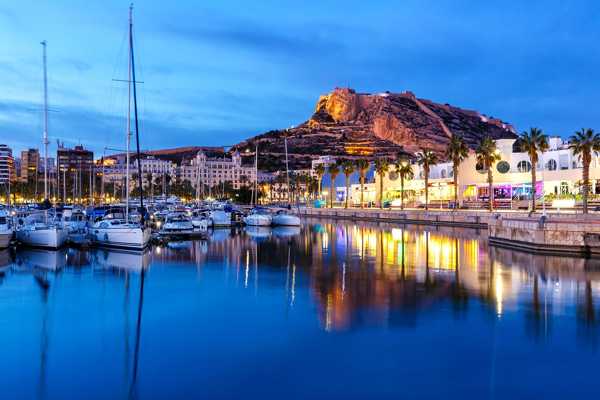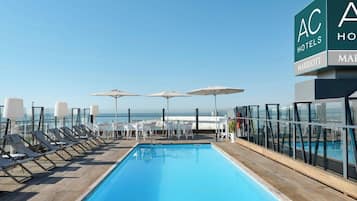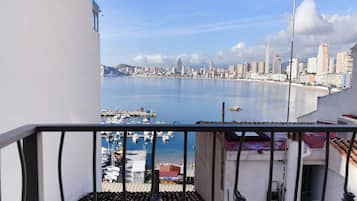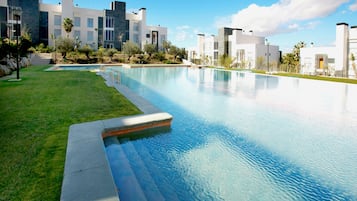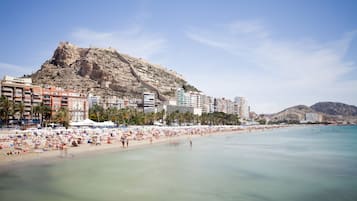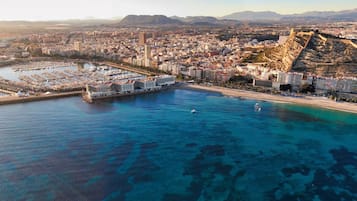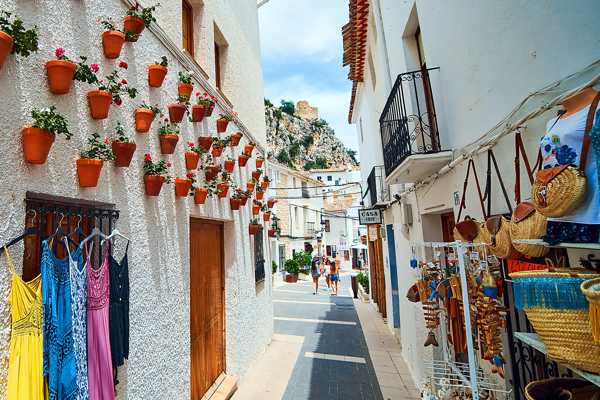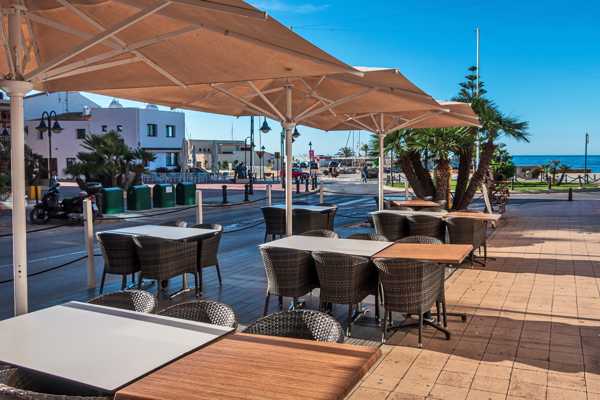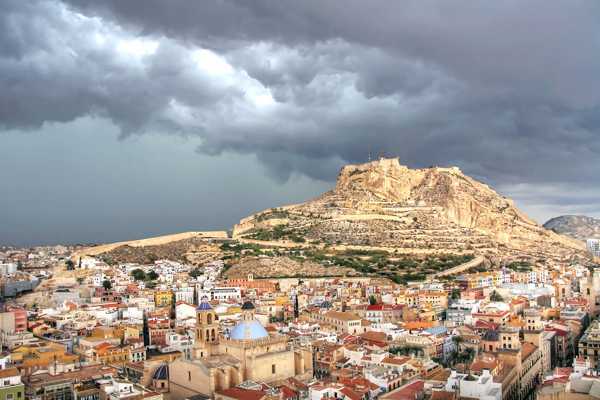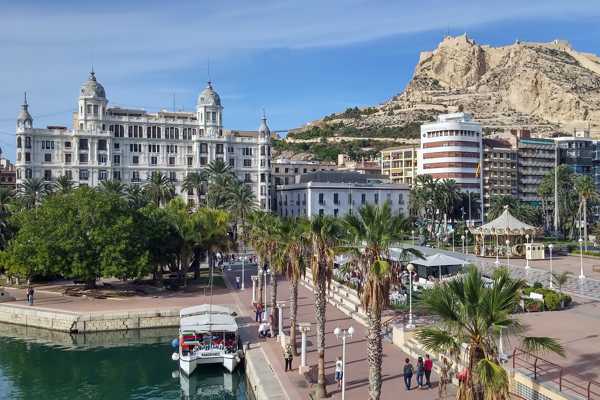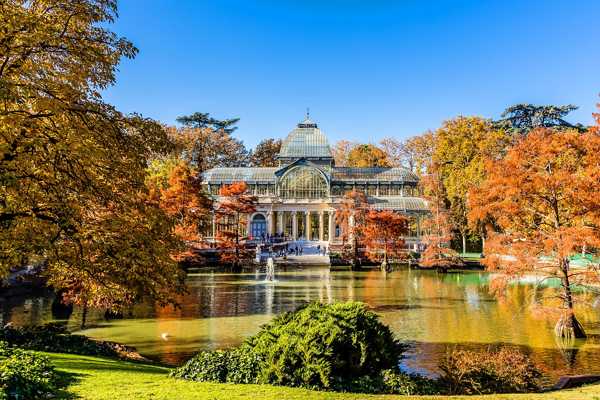Our Alicante Travel Essentials make it easy for you to get the most out of this historic Mediterranean port city. With the best landmarks and events in mind along with insider knowledge on how to get where you need to go, creating an unforgettable itinerary is simple.
The city of Alicante offers fun for the whole family and all sorts of people, no matter what kind of holiday experience you're looking for. With historic sites, beaches, shopping and stunning restaurants, you'll never be short of things to do. Make the most of this opportunity by exploring the travel essentials you need to know to prepare for the ultimate Alicante holiday.
- 1
When is the best time to travel to Alicante?

- Alicante is comfortable all year long, so there's never really a bad time to visit unless the summer temperatures are a bit too hot for you.
- There are only about 20 days of rain per year, so there's a good chance you won't even see a drop during your visit. September gets more rain than any other month, however, with an average of just over 55 mm.
- The warmest months are during the summer with temperatures regularly greater than 27 degrees from June to September. August is the hottest month with highs around 31 degrees.
- The summer has warmth and doesn't get much rain, so it's the most popular time to visit for beachfront fun, but the crowds can be dense. Winter temperatures can get too cold for the beach while still being fairly comfortable for other activities. For the most balanced experience, late spring may be your best bet.
- 2
Alicante basics

- Plug type: Plugs in Alicante are the same as what you'd find in the rest of Spain, with either a Type C or Type F outlet. Both of these options have 2 round pins, but the Type F has 2 additional earth clips on the side.
- Electricity: The electricity supply in Alicante is 230V and 50Hz.
- Currency: Being an EU member state, Alicante and Spain use the euro.
- International dialling code: The international dialling code for Alicante and Spain is +34.
- Emergency telephone number: For emergency services in Alicante, dial 112.
- 3
How to get to my hotel in Alicante?

Getting to Alicante is simple given the popularity and accessibility of the Valencian Coast. You can get here by plane, train or boat.
Airports
Flying into Alicante is easy, as several flights can get you here directly from the UK. It takes about 2 and a half hours to fly there from London, where you'll arrive at Alicante-Elche Miguel Hernández Airport about 5 miles from Alicante.
Major train stations
The city is serviced primarily by Estación de Tren de Alicante, Avenida Salamanca 1, which is the main train station. It has connections to other destinations all over the country. You can even travel from the UK by train by going to Paris from London, then to Barcelona and finally to Alicante.
Ports
Travellers arriving by boat can come in through the Port of Alicante, located at the end of the A-31 motorway. All sorts of ferries and cruise ships come through the port.
- 4
How to get around Alicante?

Travel tips
Alicante is a notably compact city, so you may be able to get where you need to go in town simply by walking. If you have to carry a lot of stuff, you want to travel outside of the city or you simply don't feel like walking, you'll find quite a few public transport options to take advantage of. Single tickets for many options are available, but if you plan to travel a lot, buying a pass may be better, because it comes with a discount. This city transport pass is called Mobilis.
Underground
There is no underground system in Alicante, and the train system doesn't travel throughout the city all that much. If you need to go somewhere nearby outside of Alicante, however, the train is one of the best ways to travel.
Taxis
Several taxi companies operate throughout Alicante. The rates are generally affordable, but they tend to be more expensive after dark. Additionally, you may find yourself waiting quite a while if you're looking for a taxi in the evening during the busy season. Ridesharing services are available too like Cabify and PideTaxi.
Bus
The bus service around town is one of the most popular ways to travel. Bus 9, for example, offers rides from the railway station to San Juan Beach every 20 minutes. They typically run all day and shut down at night, though some weekends have early morning operational hours.
Car hire
There are car hire options available, but you don't really need them to get around unless you plan on exploring some surrounding areas. If you do opt for a car hire, you'll often have to pay extra if you're under the age of 25, and you'll have to have a valid passport to prove your identity.
Bike hire
Bike hires are common in town with much of this compact city being friendly to cyclists. Scooters are often an option in addition to bicycles.
- 5
What are the main annual events in Alicante?

Alicante Carnival
- When: February or March
- What: People dress up in a variety of costumes and dance through the streets. Costumes can vary quite a bit, so expect to see trolls, fairies, princesses, superheroes, zombies and just about anything else you can imagine.
- Where: It's held throughout the city beginning around Rambla de Alicante and ending in Casco Antiguo.
Bonfires of Saint John
- When: Late June
- What: People light bonfires on the beach and throughout town, then complement the display with fireworks and dancing.
- Where: All throughout the city, but especially near the beaches.
Battle between the Moors and Christians
- When: July-August
- What: 2 groups, the Moros and Cristianos, take turns taking over the city reenacting historic battles with little regard for accuracy.
- Where: All over town, especially near historic sites.
- 6
What are the main landmarks in Alicante?

Santa Bárbara Castle
Santa Bárbara Castle is a stunning historical site with origins dating back to the 9th century. At this attraction, you'll be able to see a variety of artefacts on display including numerous Iberian and Roman remnants with a few Bronze Age items as well that are particularly old compared with everything else.
Alicante's Old Town Quarter
In Alicante's Old Town Quarter, you'll find numerous historic sites and buildings to explore that have been remarkably well-preserved. The town hall dates back centuries, or you can check out the Discovered City exhibit to dive back even further into the past with relics from the 13th century on display.
Concatedral de San Nicolás
The Cathedral of San Nicolás is a towering historic co-cathedral. Whether you're religious or not, you can appreciate the serene atmosphere and the impressive architectural design that went into this imposing building. It dates back to the 17th century, though the older cloister is based more on a 15th-century design. The Spanish baroque design is one of the best examples of the style you'll find.
Museo de Hogueras
Museo de Hogueras is a fun art museum that mostly contains numerous colourful sculptures. Kids and adults alike can enjoy a trip here, as there's a little something for everyone to enjoy. It has both indoor and outdoor exhibits as well, as some of the items are just too big to reasonably fit indoors.

